There is something captivating about looking back at my first YouTube video. The story about how I managed to turn off that judgmental voice in my brain and replace it with the fascination of getting something done with so little resources, knowledge, and technical skills. I was a kid with a dream and a little story to tell and left nothing stand in my way.
To understand this better, we need to go back to 2018.
Part 1: The Blueprint of a Memory
It started with a spontaneous, 2,000-mile flight from London to Chicago. The story itself was a simple, emotional one: a surprise family reunion after six long months. But the execution, “getting it done” part, demanded I become three people at once, armed with only a borrowed phone and a selfie stick.
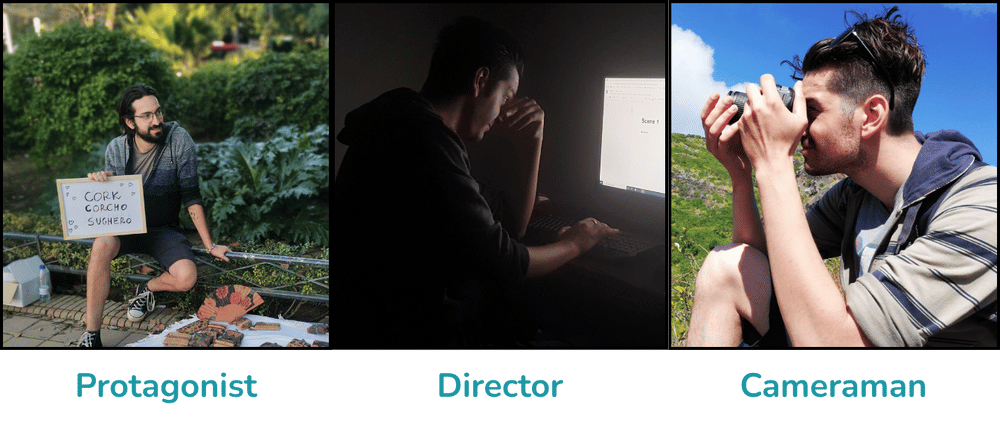
First, there was the Protagonist, the person living the story, navigating the airports, feeling the exhaustion, and experiencing the nervous anticipation of the surprise.
Second, there was the Director, the mind that had to stay one step ahead, constantly planning the narrative arc. What shot do I need next to tell the story? How do I build the suspense?
And third, there was the Cameraman, the one-person crew responsible for capturing every shot, knowing that every interaction was a live event with no second takes.
It was a constant, high-pressure negotiation between living a moment and not failing to capture it. This was the reality of creating my first YouTube video: a complete lack of experience, shyness to talk in public, and little technical knowledge.
Part 2: The Journey Haunted by a Camera
That three-person job became infinitely harder as the journey unfolded. The 24-hour marathon of travel wasn’t just a physical drain; it was a constant drain on my mental capacity. Every moment of exhaustion as the Protagonist was a moment the Director could lose focus, and a moment the Cameraman could miss a crucial shot.
The real challenge began when I had to point the camera at myself in public. It was the first time I had ever tried. The discomfort was almost palpable. In a crowded airport or on a train, surrounded by a sea of indifferent faces, raising a phone on a selfie stick felt like shining a light on my own awkwardness.
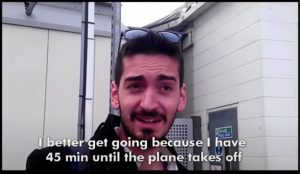
I remember the Director in my head framing a perfect shot, frontfacing the camera, explaining the next step of the journey, but the words would get caught in my throat. The Protagonist felt too shy, too seen. There were scenes filmed for my first YouTube video that never made the final cut, moments where my own reluctance won the negotiation. One of the biggest problems I had was the volume. Speaking mostly in airports, I could always find a quieter space, but due to my own shyness, I would also speak very quietly and realise that I can’t even make up what I’m saying.
Then it was the wording. In my head, it was the perfect speech, but when I had to reply, the speech was really difficult to comprehend. I had a really difficult time playing back my own recording at the beginning.
This inner conflict reached its peak during a layover in New York, where I decided to make the chaos of Times Square a deliberate chapter in the story. It was a self-imposed trial by fire.
The story was simple. Inspired by 100 days of rejection, I wanted to go to random strangers and ask them to take pictures with me. Like almost every fear we have, I built up a lot of anticipation, but the result was the complete opposite of my expectations.
Times Square is so overwhelmed with tourists that everyone there is absolutely used to seeing people taking pictures with literally everything. I asked like 10 people, and only 1 or 2 even asked me why I wanna do that.
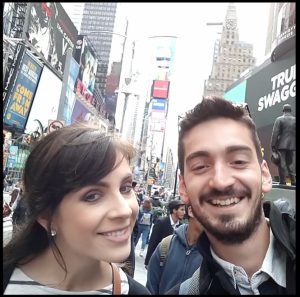
That made me feel confident in my journey, but with my excitement, I lost track of time and almost lost my connected flight, which was supposed to take me to Chicago to continue with my surprise.
Part 3: The Convergence - The Moment at the Door
This was the crucial moment, and I need to give a bit of context to understand it.
The ’90s kids are the last ones to have a phobia of cameras. There is a very understandable reason because growing up, we had a Kodak camera with 36 exposures, and each photo had to be printed individually for a preview. That invested a lot of pressure into being in front of the camera, or more especially, asking for photos.

I had a decent amount of discomfort asking my sister to record me because, inherently, I felt compelled to explain why that is important. It is fascinating for me to observe how sometimes we have the same emotional limitation regarding a technology that has evolved, while our inner perception hasn’t.
If that wasn’t enough, I also had to talk in front of her while filming, which added to it. That’s all solvable, but there is one thing that genuinely concerns me about those kinds of situations.
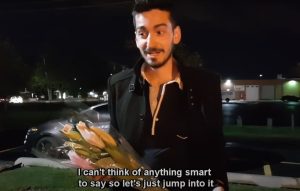
When you are up to recording a surprise, you truly and unquestionably have one take. If that exact moment isn’t captured properly, there would be no grand finale for my first YouTube video. The grand finale brings the whole story home, and there is no way you can have a do-over. If the camera isn’t recording, or someone calls, or a million variations of things happen, that is it.
That being said, having someone record the grand finale for you is a huge help. It takes away the extra layer or camerawork and you can just be in the moment.
Now let’s go back to the story.
My mom was very emotional and pleasantly surprised. I thought it was so damn important to bring some flowers, but she didn’t even care. She put them aside right away and went to hug me.
I personally love the ending, and the rawness of it makes it more intense. I feel like the world is moving rapidly towards scripts, how moments should be delivered to audiences, and having a really raw reaction and cut makes it very relatable, human, if I might say.
Part 4: The Aftermath of My First YouTube Video
After the beautiful chaos of the reunion had settled, there was a quiet moment of reflection. The joy was real, but beneath it, another current was running. We were in Chicago. The very city I had visited a year prior, a trip that had planted the seed for my entire move to London.
Being back wasn’t just about surprising my family; it was about checking in with a former version of myself. It was standing in the place where a dream of a different life was born, but as the person who had actually gone out and tried to build it. The circle felt complete. The journey had been a success. The video, despite all the challenges, had its grand finale.
But then, as the days passed and the excitement faded, a new, more sophisticated fear began to crystallise. The story had been a gift. A perfect narrative of impulse, travel, and emotion that had fallen into my lap. Lightning in a bottle.
And I was terrified I would never catch it again.
The very thing that made the video work, the sheer unlikeliness and magic of the story, felt like a creative dead end. I was afraid that my first YouTube video – my very first step – was also my best, that I had peaked before I had even truly begun. How could I ever find a story that powerful again?
Part 5: The Final Lesson - The Myth of the Perfect Story
That fear of the one-hit wonder lingered for a while. It was a new kind of cage, not of comfort, but of a singular, unrepeatable success.
But life, as it often does, proved me wrong sooner rather than later. I came to understand that the story wasn’t the lightning strike; it was the journey itself. The real lesson wasn’t in the grand finale, but in the clumsy, uncomfortable, and fascinating process of “getting it done.“
I learned that great stories aren’t rare events you are lucky to stumble upon. They are everywhere. They are in the discomfort of speaking to a stranger, in the challenge of learning a new skill or even telling someone you love them.
The universe is constantly whispering narratives. The challenge isn’t to wait for a great story to find you. The challenge is to turn off that judgmental voice in your brain, pick up whatever tools you have, and learn to hear the story you are already living.
More than anything else, I’ve learned to listen, and the universe proved me that there is so much to do and so many places I can go. Over 20 projects later, I am still at the beginning of my journey, and the more I create, the more inspiration I have. This is the paradox of creation.
Check below one of my most successful projects
